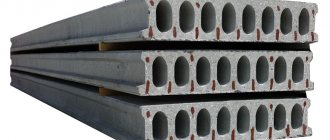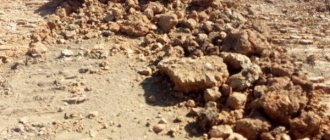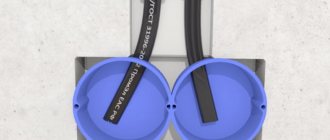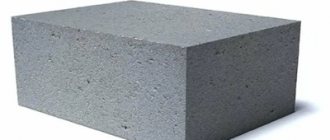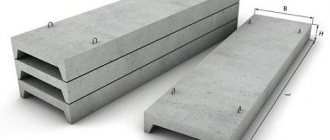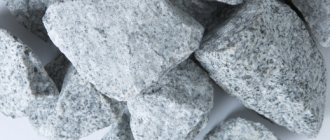The arrangement of sidewalks and local areas requires the use of high-quality materials. When laying paths, concrete paving slabs are used, which are durable and have a long service life. Products are manufactured in compliance with technology, meet established standards, and are labeled.
Features and Specifications
Reinforced concrete slabs are a popular material in the building structures market. Thanks to its universal configuration and optimal dimensions, concrete paving slabs can be used for:
- territories of any type;
- public transport stops;
- urban highways;
- areas;
- park paths;
- playgrounds;
- flower beds;
- sidewalks;
- areas.
The products are designed for high weight loads and are resistant to deformation. The canvas made of slabs remains clean during the rainy season, and in the cold season it is safe for pedestrians, thanks to the rough surface.
The advantages of the material are as follows:
- the possibility of arranging entrance groups, recreation areas, courtyards;
- long service life;
- resistance to loads;
- external parameters;
- possibility of laying patterns, drawings;
- strength;
- ease of installation and care;
- convenience during dismantling associated with re-laying communications;
- the ability to imitate granite, marble and other natural materials.
Unlike facing material, paving slabs are made in the shape of a rectangle or square.
Products are not reinforced if their structural thickness allows. When the thickness exceeds 75 mm, structural reinforcement with wire is used. To lift and move structures, mounting loops with a diameter of 6 mm are introduced.
The slabs are made from a special concrete mixture in 1 or 2 layers. Products comply with specified production standards and meet GOST requirements. The water absorption rate of the products does not exceed 6%, strength - 3 MPa, wear resistance - 0.7 g/cm2.
Advantages of step-by-step paths for country paving
- Naturalness and aesthetic appeal
Winding paths made of stone or concrete slabs are as close to nature as possible and correspond to the general trend in landscape design towards naturalness and naturalness.
Step-by-step paths made from wood cuts in country style
Step-by-step paths allow you to reduce the amount of solid concrete paving on the site and not reduce green areas for the sake of creating paths. Instead of filling the joints with sand, the distance between the step-by-step slabs is planted with lawn or filled with decorative fills: gravel, pebbles or crushed stone.
Individual paving design project as a gift
More details
- Saving on materials and labor
The construction of step-by-step paths requires several times less material than continuous paths. There is no need to install curbs. Installation costs are lower. In this case, rainwater does not accumulate on the surface, but is effectively drained into the space between the slabs.
1606 rub. per sq. m.
Triad Braer 60 mm Sahara
Go to catalog
Paving with paving slabs BRAER Triad
- Design variability
The range of paving materials allows you to create paths to solve various design problems.
Rectangular large-format paving slabs are suitable for a garden in high-tech or modern style. Natural stone of irregular shape is used in landscape gardens. Wooden saw cuts or concrete products with a wood-like texture will highlight the beauty of a country-style area. 2950 rub. per sq. m.
Polygonal Gothic 80 mm Granite Pokostovsky
Go to catalog
Original design of step-by-step paths made of paving slabs Polygonal produced by Gothic Factory
Kinds
Depending on the purpose, a distinction is made between concrete paving slabs and those for arranging the roadway. Road reinforced concrete products cover car parks and road surfaces. This group of structures involves the introduction of reinforcing reinforcement into the frame, which ensures operation of the slab under extreme load conditions.
The slabs are classified according to their purpose and a distinction is made between products intended for permanent and temporary roads. Designs may differ in composition and connection method. Products intended for arranging paving surfaces are presented in a wide range.
Depending on the configuration there are:
- square (K);
- decorative road elements (EDD);
- curly (F);
- rectangular (R);
- bordering (O);
- hexagonal (W).
The building materials market offers special coatings that are used to construct paths for people with disabilities. They are convex-shaped elements with a rough surface and provide tactile contact with the pedestrian’s feet.
pros
Concrete tiles have many advantages: durability, strength, excellent drainage properties, the ability to easily disassemble the coating if necessary, a wide selection of sizes and colors of products, and environmental friendliness.
Not without its shortcomings. During a sudden cold snap after heavy rainfall, tiles saturated with water may lose their strength and collapse.
If you violate the laying technology, grass will grow in the spaces between the tiles. During the winter season, ice may form on the surface of the tiles.
Basic designations and dimensions
Conventional product markings are generated from a combination of numbers and letters separated by dots. In this case, the first numbers indicate the typical size of the slabs, the letter corresponds to the type of structure, and the indexation following it contains information about the thickness of the stone in cm.
The tile is square in size, 37.5 x 37.5 cm in size, 7 cm thick, and is marked “4.K.7”. The dimensions of reinforced concrete products for road construction are:
- length - 3-6 m;
- width - 1.2-2 m;
- height - 0.14-0.22 m.
Square-shaped products are produced with a side of 0.2, 1 m. The thickness of the structures depends on the purpose of the equipped fabric. The pedestrian path is laid with paving stones, 4-6 cm thick; in places of increased load, shaped elements with a thickness of 8 cm or more are required. If the height of the pavement is 4 cm, preliminary preparation of the concrete base is required.
Standard sizes of paving slabs
If previously there was a clear GOST for almost all industrial products, today everything is much more complicated. Manufacturers are free to do as they please; dimensions are adjusted not to general categories, but to their own needs. Some save raw materials, others have an imported line with their own units of measurement, and for others the shape is more important. Now you can create any designs using paving slabs. As a result, today's paving slabs come in a wide variety of sizes.
You will find options for laying Old Town tiles here.
A modern product is produced using vibration pressing or vibration casting. Tiles designed for increased wear are reinforced with metal mesh. Performance characteristics largely depend on the production method.
You may also be interested in the texture of the paving stones.
Thickness and width
The visual component of the coating and how well the whole material fits into place largely depends on the length and width of the tile. Thickness determines the specific scope of application and is the main operational indicator that determines the choice. From the entire range of selling organizations, several popular categories of tiles can be distinguished:
Pedestrian path for gardeners
The thickness of the pedestrian walkway is 30 mm, the most budget option, designed for paving sidewalks, garden paths, house blind areas, areas around the porch, steps, under awnings, and in gazebos. It is not suitable for laying driveways, as it simply cannot withstand such a load. But it will cope quite well with the movement of pedestrians or children on bicycles. If you lay the floor around an outdoor grill or barbecue with such tiles, the result will be both acceptable and technically justifiable for the money. The technology for laying paving stones is described here.
Universal
The thickness of the universal one is 50 - 60 mm, it costs more, but the scope of use is wider. It will perfectly perform the functions of a pedestrian walkway if it is used to line the yard, paths, parks and other recreation areas. It can also be used to cover a driveway or garage floor if passenger vehicles or minibuses and similar vehicles are expected to enter.
Monolithic for street paths
The thickness of the monolithic one is 70 – 80 mm or more, it itself is expensive and they charge a substantial amount for working with it. Designed for parking lots, driveways for freight vehicles, and for those areas where there is a constant high load. But she is not afraid of any operating conditions; she will endure any emergency in operating mode. How to lay paving slabs is described at this link.
For use in private areas and gardens, tiles with a thickness of 30–60 mm are usually used.
It is affordable and has all the necessary parameters. If the installation technology is followed, it will completely exhaust its resource. The only thing is that you should not lay it on entrances and in other areas with high loads.
Surface dimensions
The length and width of the tile are necessary to calculate its consumption, and knowing the consumption, it is easier to calculate all other materials. Given the abundance of manufacturers, it is difficult to describe the exact dimensions, but it is realistic to approximately systematize the data based on the shape of the tile. All sizes are standard.
Square
Square. The most popular square is 300 × 300 mm, followed by 350 × 350 mm and 400 × 400 mm. Massive slabs 500 × 500 mm are rarely used in private households.
Rectangular
Rectangular. The well-known “bricks” or “paving stones”; this form was used at the dawn of geography, but even today it is quite relevant. Such tiles are usually produced in sizes 200 × 100 mm and 250 × 125 mm with minor deviations depending on the specific manufacturer. In addition, we advise you to familiarize yourself with the options for laying paving stones.
Curly
Curly. Here the flight of fancy is unlimited, but the following main dimensions can be distinguished: 295 × 295 mm, 200 × 168 mm, 120 × 180 mm, 120 × 190 mm.
It is not recommended to use not only thin, but also large tiles for vehicle access. When hit by a wheel, the edge will constantly be pulled out of the masonry, but the fragmentary coating will remain intact longer.
What plastic tiles for paths in a dacha are is described in this material.
Production methods
Compliance with the manufacturing technology of this type of product ensures high-quality performance characteristics of the material. Requirements for slabs are regulated by the State Standard.
Structural elements can be purchased in Moscow and the Moscow region. Contacting companies involved in the production and sale of products allows you to purchase products that meet established standards. The production of structures on an industrial scale is organized in compliance with established standards and requirements.
Conveyor technology involves the use of vibration casting and pressing. Smooth concrete paving products are produced using the casting method, which involves pouring the mixture into prepared forms. When pressing, vibration equipment is used.
This method ensures the resistance of elements to temperature changes and mechanical loads. The service life of the products is 25 years.
Forming products using vibration pressing involves the use of such materials and equipment as:
- concrete mixture;
- molds for filling;
- special additives that improve performance characteristics;
- mineral pigment;
- vibrating table.
The prepared mixture is poured into molds, pre-greased with oil and placed on the table. After formation, the polymerization process of the composition takes place within 2-3 days. It takes a week for final hardening. This fact must be taken into account when making paving elements in artisanal conditions.
How to do it manually
When making structures yourself, you will need to prepare a concrete mixture of cement, sand and crushed stone, taken in a ratio of 1:1:2. To prevent the appearance of air pockets, it is recommended to add a plasticizer, which is 5% of the weight of cement.
A mineral dye is introduced along with the additives. Water is used in the amount necessary to prepare a solution of medium consistency. It is recommended to use a concrete mixer to prepare the mixture. The volume of solution is calculated based on the number of molds to be filled.
In the absence of a vibrating table, reinforcement is used to further strengthen the product. The manufacturing technology involves filling ½ of the mold, laying the mesh, and pouring the rest of the mixture. After this, compaction is carried out using a trowel.
To control the uniformity of filling, use a building level. Self-production allows you to save money and produce styling elements of different configurations and colors.
You can simplify the task by using ready-made rubber molds. In their absence, pouring is carried out in self-made forms from a wooden panel with removable formwork. To ensure that finished products are easily removed, the inside is impregnated with hot drying oil.
How is a reinforced concrete road slab used?
Road slabs are widely used in the construction of temporary access roads to construction sites, highways and sites. The arrangement technology includes several stages:
- Design - work of surveyors on the ground, calculation of loads, the required number of slabs, preparation of design documentation, explanatory sections, if they are not included in the basic design of the facility;
- Preparation of the base - excavation of the fertile soil layer, leveling the area;
- Laying technological layers of the cushion - geotextiles, crushed stone, sand. The gravel-sand cushion is compacted by road rollers; subsequently, it absorbs and evenly distributes the load. Geotextiles do not allow horizontal displacement and spreading, which increases efficiency and increases the load-bearing capacity of the coating;
- Delivery, unloading and laying of road slabs - if necessary, welding of mounting loops is carried out to ensure maximum stability against horizontal displacement.
Additional surface finishing is not required; rigid fixation with cement-sand mortars is not necessary, but is allowed if there are no plans to dismantle the slabs.
Installation of slabs
With the help of paving stones you can arrange a personal plot or lay out an alley. The use of products of various shapes allows you to recreate graphic elements in the form:
- rhombus;
- semicircles;
- square;
- rectangle;
- bricks;
- columns;
- braids.
Laying slabs requires following the stages of work. The basic principles of installation are to install products on leveled bases made of crushed stone, sand, concrete, and compacted soil. A cushion of sand and crushed stone is often used in private courtyards. A concrete base is required in case of difficult operating conditions.
The algorithm of actions associated with preparing the foundation involves marking the site, removing the top layer of soil, 15 cm deep. After compacting the soil, grooves are formed for water drainage, and a layer of sand is poured.
After arranging the pillow, slabs are installed, maintaining the distance between the elements. This condition eliminates the deformation of the canvas and makes it possible to easily replace elements. The prepared mixture is poured over the laying surface. Cleaning of the canvas is carried out by rinsing with water along the cracks.
Regardless of the type of foundation, careful planning of the site is required, taking into account levels and slopes for water drainage. When arranging garden paths, the slabs can be mounted on the ground. In this case, to prevent the growth of weeds, it is recommended to lay a layer of special fiber.
When purchasing finished products, it is recommended to take into account the installation method. The purchase must be carried out with a reserve. Compliance with the rules of installation and production of slabs allows you to independently equip the site. In this case, the chosen masonry scheme will be distinguished by the originality of the solution.
TOP 7 types of slabs for step paths
In this article we will not consider paths made of natural stone and wood, but will focus on high-quality factory solutions.
Rectangular slabs
The most common size of large-format concrete slabs for step paths is 600x300x80 mm.
The main use of such a slab is urban paving, parking lots or step-by-step garden paths. In the warehouse remains of factories, it is found mainly in plain, cool colors. In order to decorate the local area of a private house, we recommend using slabs from the Color Mix, Leaf Fall or Artificial Stone collections. 1439 rub. per sq. m.
Old Town Landhaus Braer 60 mm Pride
Go to catalog
1481 rub. per sq. m.
Classico circular Braer 60 mm Malva
Go to catalog
1765 rub. per sq. m.
City Braer 600x300x80 mm Pride
Go to catalog
Step-by-step path made of City slabs 600x300x80 mm in a minimalist style
Square slabs
The sizes of square slabs, which are suitable for comfortable movement around the garden, vary from 300 to 600 mm.
Our clients prefer squares 400x400x60 mm or 500x500x60 mm. It is convenient to step on such slabs, placing them under the average step of an adult. In the warehouse of the Choice plant you can find square slabs for step-by-step paths from the Artificial Stone, Stonemix or Granite collections. 2014 rub. per sq. m.
Quadrum Choice 400x400x60 mm Basalt
Go to catalog
Paving with paving slabs Quadrum produced by Vybor
Wood textured slabs
Concrete paving slabs with a wood-like texture are especially popular. The relief surface of such slabs blends organically with wooden houses and gardens in a rustic style.
380 rub. per piece
Planks White Hills 50 mm C915-45
Go to catalog
Step-by-step paths from White Hills paving slabs
The largest manufacturer of vibrocast stone and paving slabs, White Hills, offers 6 standard sizes of slabs and 5 colors: from light beige to dark brown.
420 rub. per piece
Planks White Hills 40 mm C905-44
Go to catalog
Step-by-step paths made of paving slabs with wood texture
The choice plant's assortment includes large-format Stonewood slabs with a texture that imitates natural wood: cedar, plane tree, walnut or wenge. Such slabs are suitable for creating original step-by-step paths.


